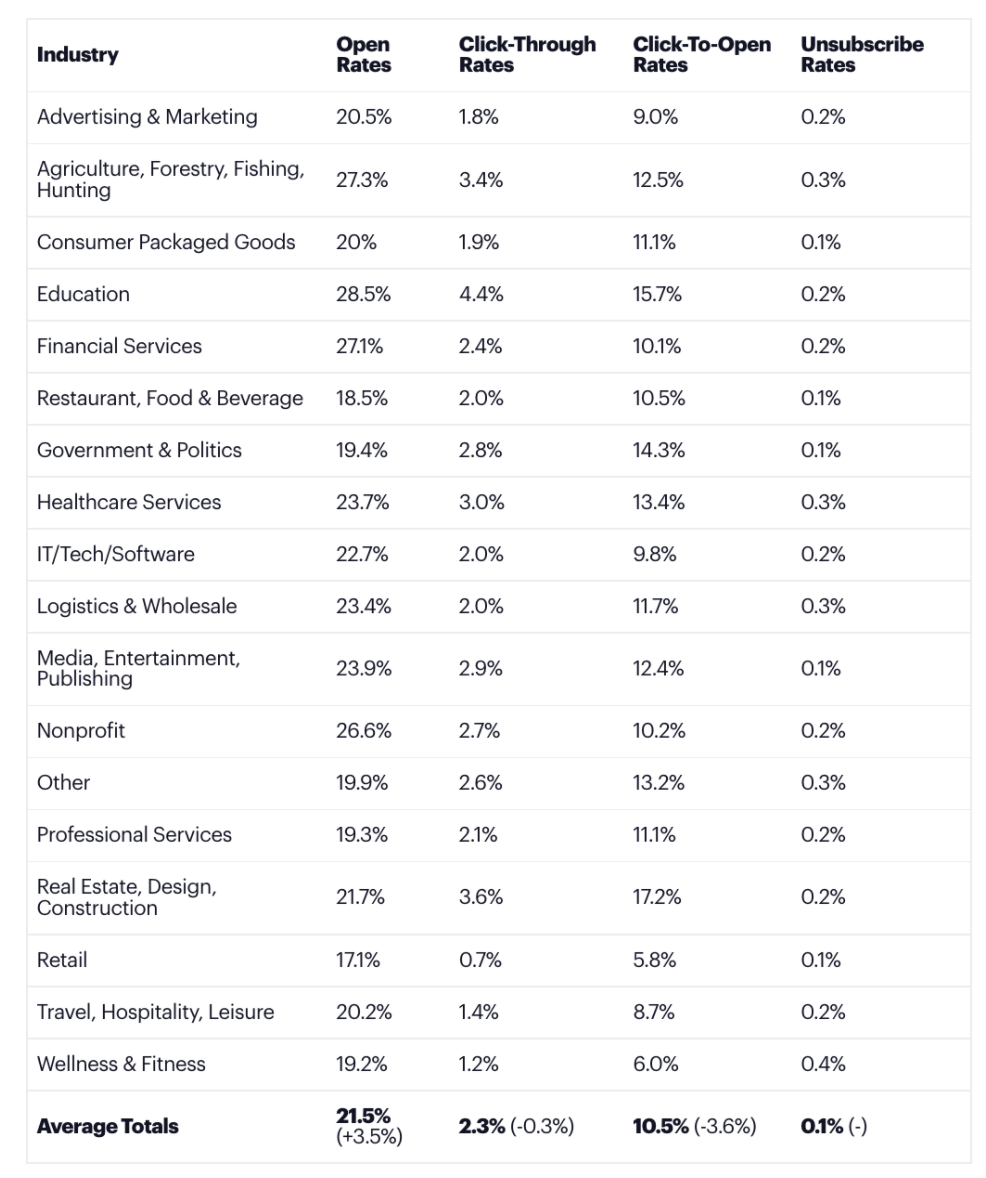
Email marketing can help you foster better customer relationships and increase sales at an affordable cost.
In 2021, it was reported that email users (or those who had email) exceeded 4 billion, with the predicted user growth rate to be 3% or around 100 million more each year in 2022.
Interesting right? Well here’s a summary of other email marketing statistics for 2021-2022:
- 89% of email marketers use newsletters.
- More emails were opened on mobile (37%) than on desktop (30%).
- Nearly 47% of email users open commercial messages via Gmail.
- Marketers send the most emails (22.2%) on Thursday.
- The ideal weekly limit is up to 5 emails.
- There’s a 5% higher chance for inbox placement after 12 pm.
- Personalised emails have a 29% higher open rate.
- The unsubscribe rate was higher in Australian emails.
- Australians read food-related emails 2x the global average.
- Email marketing is still the second most efficient way to gain new customers.
Well, what does that mean for you and your business?
A few things.
Living in a post-COVID world, technology, trends, and best practices have changed tenfold. Keep reading on how you can maintain best practices for your email marketing for 2022 based on the latest statistics.
Statistic 1: The average open rate (OR) in Australia is 20.6%
What does it mean: The % of subscribers on your mailing list who received your email and opened it.
Best practices to improve your open rate (OR):
- Comply with email spam regulations
- Make sure the email includes sender name, email and has an unsubscribe link or it may be marked as junk mail.
- Have a compelling/subject line
- Use humour, emojis, ask a question, personalising with recipient’s name when possible.
- Always fill your email’s preheader text for the email preview
- Write a little blurb for what’s to come or what the email contains.
- Use email analytics and find optimal day/time to send your content
- Utilise your email automation tool and look at analytics to see when your clients are the most active.
Statistic 2: The average click-to-open rate (CTOR) in Australia is 14.8%
What does it mean: Your CTOR is calculated based on who opened your email and then went on to click a link in the email.
For example: If you sent 100 people an email but only 50 people opened it. Of those 50 people, 15 clicked on the link in your email. Your CTOR would be 30%.
Best practices to improve your click-to-open rate (CTOR):
- Make it simple and use only 1 or 2 call-to-actions
- When you’re asking your reader to do 1000001 things, they’ll do none of them.
- Make your email short and sweet
- If you want to speak more deeply about a certain topic, direct them to a blog post on LinkedIn or your website.
- Use strong visuals over long-bodied text to convey your message
- Your readers will get the gist faster and maintain their attention span.
- Optimise your email for mobile
- Always make sure the email reads well across multiple devices. 47% of people of all people across demographics use a mobile application for checking their email.
Statistic 3: The average bounce rate in Australia is 1%
What does this mean: The bounce rate measures the percentage of how often your emails get “bounced” back to you. This could be because the email address provided was fake, the address isn’t active anymore, the recipient’s inbox is full, or their server hasn’t loaded.
Note: A ‘hard’ bounce rate is permanent like a fake address. A ‘soft’ bounce rate is temporary that can be solved like a server problem.
Best practices to improve your bounce rate:
- Double opt-in
- When customers subscribe to your emails you can ask for a double opt-in such as a follow-up email to confirm or verify their email before they get added to your mailing list.
- Use reputable email marketing platforms and business email
- Sending mass emails from a Gmail or Yahoo account will get you zapped by spam filters.
- Take inventory and regularly review your email list
- Do a sweep of your mailing list regularly and check to see which email addresses are a repeat problem and manually remove them.
Statistic 4: The average unsubscribe rate in Australia is 0.20%
What does this mean: How many people are opting out of your emails
Best practices to improve your unsubscribe rate:
- Limit your emails
- Make sure you are not bombarding your customers (2 emails a week max).
- Not enough emails
- You are not sending enough and they forget about your business – then you show up again and they view you as a random annoyance
- Set the expectations and be upfront
- It doesn’t line up with the expectations they had when subscribing. Always be clear from the start when they first join your mailing list, what content is coming their way and how often
- Ask for feedback when they unsubscribe
- To explore more why people are unsubscribing, ask for feedback through a quick survey to pinpoint any issues
Below is a table to show you some useful email benchmarks by industry from Campaign Monitor:

About the Author:
Amy Miocevich is an Australian author of Very Good Marketing, director of her company Lumos Marketing and a mum. Amy has a plethora of business knowledge and experience helping individuals across all industries over her professional career. She has a deep and innate passion to help small businesses achieve their Big Hairy Audacious Goals, whatever they may be. When Amy isn’t busy working or waking up at 5 am to run, she is probably eating ramen or wanting to eat ramen. Say hi to Amy at amy@lumosmarketing.com.au.










